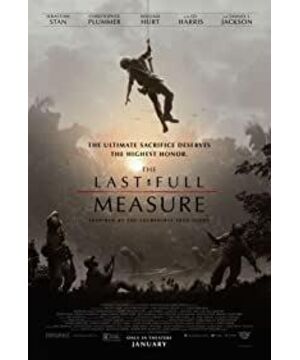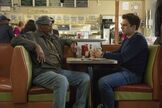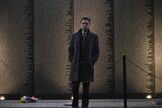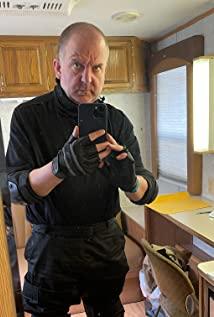1. John James Kedenburg
In December 1968, the 23-year-old Kedenberger fell into a hard fight. The MACV-SOG Nevada reconnaissance team was pursued by at least one battalion of North Vietnamese regular troops. However, Kedenberger itself was not a vegetarian. He had fallen into a similar situation six months ago. In the scene of, he broke a bloody path while carrying the body of the dead reconnaissance team leader and successfully evacuated. This time Kedenberg chose to let the Montagnard minority scouts go to the evacuation point first. After you break, you can exchange fire to block the chasing soldiers so as to exchange time for your teammates. After completing the block and rejoining the team, Kedenberg learned that one of his scouts had left the team and disappeared during the block. Kedenberger quickly called for an aerial evacuation. The first Huey helicopter picked up the four Montagnard scouts, and when the second Huey arrived, the North Vietnamese troops had already begun to break through the remaining four reconnaissance teams. On the line of defense, Kedenberg quickly hung up the evacuation slings with the remaining three scouts, preparing to leave this place of death immediately. But at this time, the missing investigator ran out of the woods. Once lost, he ran all the way to find the correct evacuation point after hearing the noise of the helicopter. Kedenberger didn't hesitate when he saw the scout arrived, he untied the sling and handed it to his subordinates. He backed up and picked up the CAR15 carbine to guard the helicopter that was about to evacuate. When the helicopter lifted off, everyone on board witnessed the Kedenberger single-handedly engaged in close quarters with the incoming North Vietnamese chasers. After knocking down 6 North Vietnamese soldiers, he was shot and fell down. Not long after, the U.S. Aerial fire strikes arrived at the scene, and bombing enveloped the location where Kedenberg fell. It took nearly four hours of fierce battle for the SOG Elinoy reconnaissance team responsible for the search and rescue of Kedenberg to reach the location where Kedenberg was last sighted and found his body. Kedenberg was selfless because of his selflessness. Give up his last chance of escape to others and was posthumously awarded the Medal of Honor.
2. John Ripley
During the spring and summer offensive in 1972, Captain John Ripley, an American advisor to the South Vietnamese Marine Corps, and 700 officers and soldiers from the Third Battalion of the South Vietnamese Marine Corps were ordered to defend the North Vietnamese offensive in the East River Bridge area, with only light tanks. In the case of support, the South Vietnamese Marine Corps was gradually unable to resist the North Vietnamese Army with T54 heavy tank infantry support. Once served as the Marine Corps Reconnaissance Platoon (Force Recon) platoon leader and with the Royal Marines And Ripley, who has a record of exchanges and cooperation in SBS special forces in Malaysia and Norway, was immediately given the order to blow up the bridge by his boss, Lieutenant Colonel Gretelley. The Lieutenant Colonel worried that his decision would be equivalent to pushing Ripley to death. Jedi, but Ripley is very open-minded. He is the only marine in the United States who has completed the Army Ranger commando training, the Navy UDT underwater blasting training background, and is eligible to wear the Royal Marines commando green beret. The team member, not to mention that he had four actual combat experience injuries, was the only suitable candidate among all the combatants present that day.
"I know very well that it is basically impossible to blow up the bridge before I am killed by the enemy. But when I know that there is no chance of surviving, a beautiful thing will happen: I will no longer be fooled by my chances of surviving. disturb."
Ripley carried a total of 500 pounds of TNT explosives back and forth several times and echoed under the Donghe Bridge (note that Ripley was still fully armed), in order to avoid being directly witnessed and killed by North Vietnamese snipers on the bridge, he was not allowed There is no need for such a physically and mentally intensive method. In the absence of a suitable blasting detonator, he risked his death and used a timed fuze that he didn’t know when it would explode, and the first explosive was still the closest to the North Vietnamese Army. He only gave himself 30 minutes to climb back to the direction of the South Vietnamese friendly forces. Ripley himself did not believe that he could go back within half an hour. All he cared about at the time was that he had to rush to North Vietnam. The T54 tanks crossed the river and slaughtered the only remaining M48 tank in South Vietnam to complete the blasting mission. Ripley really succeeded. After the Donghe Bridge exploded, it burned for a full four days. The armored forces of North Vietnam were unable to move and became an air fire strike. Live target. However, the losses on the South Vietnamese side were also very majestic. The original 700 soldiers of the third battalion of the South Vietnamese Marine Corps, who was with Ripley, finally only 52 survived and withdrew from the line of fire. All the reinforcements of the M48 tanks were destroyed in South Vietnam. At the moment when many commanding officers and cadres of the Marine Corps were nearly killed, Ripley became the actual ground commander for the troop evacuation operations. Ripley's single-man blasting operation was assessed afterwards and it was probably one of the main reasons that prevented the North Vietnamese Army from attacking South Vietnam early in the spring and summer offensive.
When Ripley was on the verge of death due to liver failure in 2002, the Marine Corps commander immediately used the helicopter of the Marine Corps Air Force One Squadron to urgently transport a replaceable liver, and successfully rescued Ripley. A little compliment from the veteran of the Marine Corps. This makes Ripley live another 6 years.
The accessories that Colonel Ripley used to wear during his lifetime: safety pins with four bullets, three of which nearly killed him in the Vietnam war zone. He smiled and recalled that one of the shots was when the enemy fire penetrated the steel plate of the helicopter he was flying on. If the bullet of his ammunition bag hadn't blocked the bullet, he would probably have been shot in the abdomen. When he felt bored after a bad day, he would take a bullet out of his pocket and look back at the past. And tell yourself that today is not so bad compared to previous years.
View more about The Last Full Measure reviews











